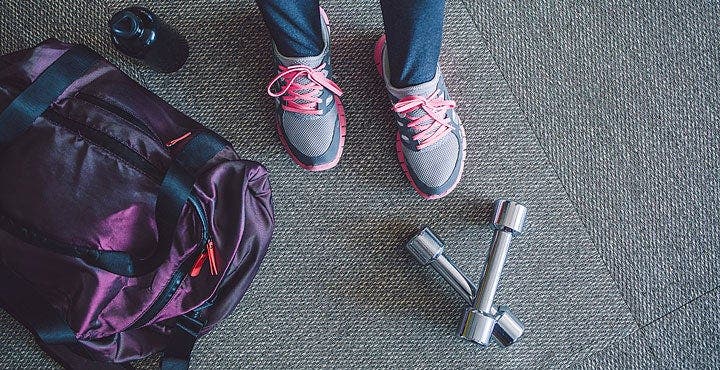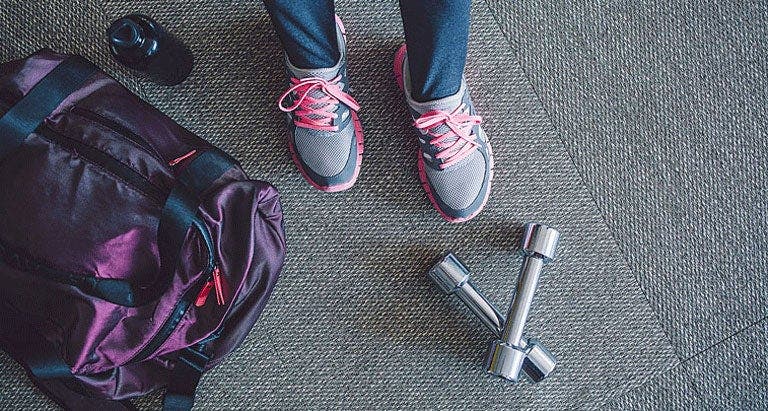Why Dumbbells Should Be Your Favorite Fitness Friends


No matter where you may be in your fitness journey, dumbbells should be a part of it. Not only are they convenient to use and store, dumbbells are relatively inexpensive, and their versatility makes them useful for a wide variety of workouts. All of this adds up to a smart investment for both your body and your wallet. Here’s more on why dumbbells take the top spot for workout equipment.
Cost of Dumbbells
“Dumbbells are an excellent low-cost option for strength training and even metabolic conditioning,” explains Mary Edwards, Fitness Director and Professional Fitness Trainer at Cooper Fitness Center in Dallas. “They’re easily accessible and sold in most major athletic retail stores and online.”
Okay, so how much will you have to spend? The cost is relative to the weight of the dumbbell, says Edwards, meaning heavier dumbbells will cost more. If heavier happens to be outside your price point, worry not; you can still get a great workout with lighter – less expensive – dumbbells. “You can manipulate your rep scheme by doing a higher number of reps or increase the work to rest ratio to challenge to your skeletal and muscular systems,” she suggests. Keep the rep range lower and rest periods longer with heavier dumbbells, and bump up the reps and decrease rest times with lighter weights.
Try This: Upper-Body Chair Workout
Versatile and Effective
The American College of Sports Medicine recommends adults get in at least two days of full-body strength training per week, and according to Edwards, dumbbells provide an easy means to accomplish this. “They can be used for any multi-joint movement that targets major muscle groups of the body—such as squats and chest presses,” she explains.
Dumbbells can be used in a variety of upper and lower body and core exercises, and they’re also a convenient option because they can be used pretty much anywhere: the gym, home, and even outdoors. “Dumbbells don’t require any setup – just grab and move,” says Edwards. They’re easily transported, don’t take up much room, and if using two is too much, just drop one and keep going. When you have access to a set of dumbbells, the sky’s the limit on your choices of exercises and workouts.
Dumbbells’ Body Benefits
Resistance training is vital to optimal health and fitness, and Edwards notes that among other things, it improves balance, blood glucose management, sleep, heart tissue health, metabolic rate and body composition. “Dumbbells are great for strength training, specifically loading the skeletal system to improve bone density,” she explains. “They also challenge the muscular system to enhance lean mass, metabolism, and ultimately function.”
Another benefit to using dumbbells in your strength workouts: Unilateral training. Working out with dumbbells helps to balance strength since they provide equal load to both sides of the body. Dumbbells can be the ideal external resistance when doing isolation exercises for specific muscle groups—like the biceps in your arms, and they’re just as useful for multi-planar movements—such as walking lunges—to work several muscle groups simultaneously.
RELATED: Why Strength Training Is SO Good for You
Weight Matters
When looking for dumbbells, Edwards, a National Strength and Conditioning Association Certified Strength and Conditioning Specialist, says no one particular type is superior to another. The most important consideration is to select the load or range of load that you need.
“The type of dumbbell you choose may be related to the actual weight of the dumbbell,” she explains. “You’ll find that vinyl-covered dumbbells come mostly in lighter weights, whereas adjustable dumbbells come in heavier loads, ranging from as high as 50 to100 pounds. Rubber-end dumbbells usually cover a wide range of weights,” she says. Whatever you choose, Edwards agrees they’re equally good.
As mentioned earlier, just about any size dumbbell will do the trick, however, if you have the budget, you may want to invest in two or three ascending sets of weights. A small assortment of dumbbells will allow you to choose the appropriate weight based on the size and number of muscle groups you’re working. For example, you’ll be able use the heavier weights when working legs and lighter for triceps and biceps, or use one heavier dumbbell when doing a multi-joint combination exercise, such as a reverse lunge with rotation.
